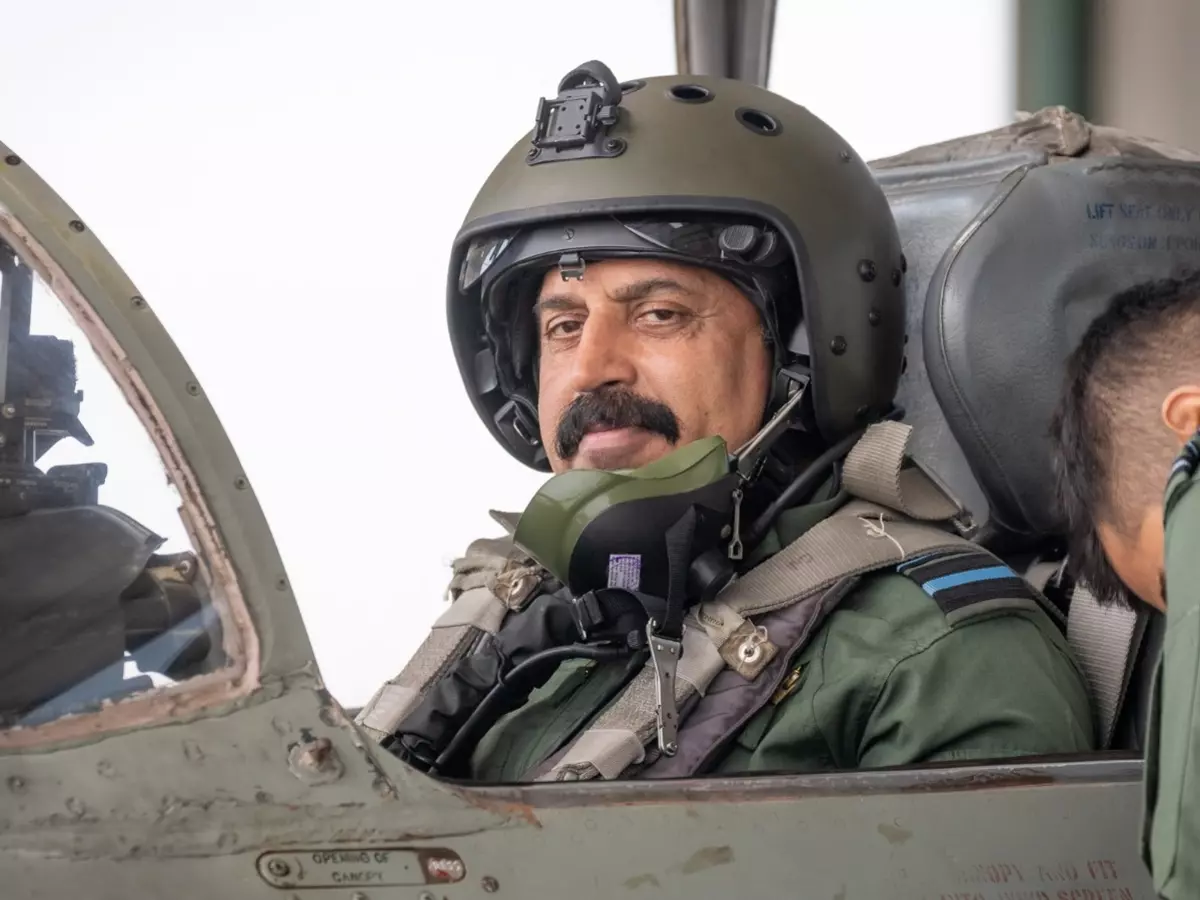The Farewell Flight Of Air Chief Marshal RKS Bhadauria
Air Chief Marshal RKS Bhadauria, the current Air Chief - officially called the CAS, short for Chief of the Air Staff - retires on 30th September 2021.

Air Chief Marshal RKS Bhadauria, the current Air Chief - officially called the CAS, short for Chief of the Air Staff - retires on 30th September 2021.
In all the busy-ness of handing over the world¡¯s fourth largest Air Force to the next Chief, and the inevitable rounds of farewell visits, he took out some time to fly a fighter plane.
 Air Chief Marshal RKS Bhadauria | BCCL
Air Chief Marshal RKS Bhadauria | BCCL
In the IAF, a pilot is not only a pilot but also an officer, meaning he or she performs other duties as a leader. At junior ranks, the emphasis is more on flying, but as one gains experience, expertise and seniority, more and more is required from the officer, in addition to flying. After a certain rank and age, the component of active flying starts reducing and the officer is expected to lead at every post and command. The pinnacle, of course, is at the level of the CAS, where it would be 99.9% leadership and 0.1% flying - just enough to keep in touch.
 Air Chief Marshal RKS Bhadauria | BCCL
Air Chief Marshal RKS Bhadauria | BCCL
The Air Chief could just have driven across to Air Force Station, Palam, which is the other side of IGI Airport at Delhi, and flown one of the VIP aircraft, combining the trip with one of his visits to some base.
But he chose to fly the MiG-21, at Halwara airbase, where he began his career some 40 years ago in an earlier version of the timeless aircraft, as the junior-most officer in his first operational unit, No. 23 Squadron, ¡®The Panthers.¡¯
#FullCircle
¡ª Indian Air Force (@IAF_MCC) September 25, 2021
Air Chief Mshl RKS Bhadauria flew his last sortie in a fighter aircraft as #CAS on 13 Sep 21.
His flying career in #IAF began with No.23 Sqn, 'Panthers', flying the MiG-21 at Halwara, and so it ended, in the same ac of the same Sqn at the same Stn.#FiniFlight pic.twitter.com/A9dSLZvw9h
And he didn¡¯t fly with an experienced pilot in a two-seater trainer. He flew solo in a single seat, single-engine fighter aircraft, where he alone would be responsible for everything. Remember, flying is an activity that requires constant practice, and one can get ¡®rusty¡¯ in just a few weeks.
A single-engine aircraft is inherently unsafe because, in case of trouble, this vehicle cannot be stopped on the roadside to await assistance. In a fighter plane, even if you have another airplane in formation, you are alone, all by yourself, absolutely in control and yet, somehow, completely helpless, because nobody else can come and help you if things go wrong. And a lot can go wrong. I know, I¡¯ve flown the legendary MiG-21 all my life in the IAF.
 Air Chief Marshal RKS Bhadauria | IAF/Twitter
Air Chief Marshal RKS Bhadauria | IAF/Twitter
And this applies to all the single seater fighter planes, everywhere.
That¡¯s why I¡¯m so awed and touched by this flight.
You probably are aware that the ill-informed call the MiG-21 a ¡®flying coffin.¡¯ Therefore, his choosing to fly it for his last flight in the IAF shows immense maturity and great leadership.
Even if we know better, it¡¯s still a single-engine fighter plane, vulnerable to something as unpredictable and unavoidable as a bird hit. The small delta winged plane, flying purely by the brute force of its engine, can glide no better than a brick. So, the only way to survive in case of an engine failure is ejection - the last resort of a fighter pilot.
 Air Chief Marshal RKS Bhadauria | IAF/Twitter
Air Chief Marshal RKS Bhadauria | IAF/Twitter
Although ejection seats have evolved over the years and are reasonably efficient, they are by no means the safest and most preferred mode of transport! I know a few who have suffered major injuries during ejection, including permanent paralysis.
Now you understand the enormity of a 62-year-old, retiring after a long and illustrious career, flying the MiG-21 solo.
We have a saying in the IAF: ¡°There are bold pilots and there are old pilots, but there are no old and bold pilots.¡±
Guess we witnessed an exception to that rule.
My beloved MiG-21 is fairly old. In its various versions, it has served in the IAF for over 50 years. Yet, even the aircraft must have saluted its oldest and boldest solo pilot!
 MiG 21 Bison Aircraft | PTI
MiG 21 Bison Aircraft | PTI
That¡¯s because this flight symbolises a lot more than mere nostalgia.
It shows great physical fitness, amazing flying skills, supreme confidence in oneself and in the machine, as well as in the people who maintain it and in those who create the safe environment for flying.
Most importantly, it shows quietly audacious leadership and an unsuppressed love of flight.
One can¡¯t find a better example worldwide.
These two qualities together will certainly inspire the serving as well as the future ¡®Air Warriors.¡¯
And inspired me too.
I salute you, sir!
The writer is a former fighter pilot of the IAF and now a commercial airline pilot. He is the author of two books and can be contacted at www.avinashchikte.com
